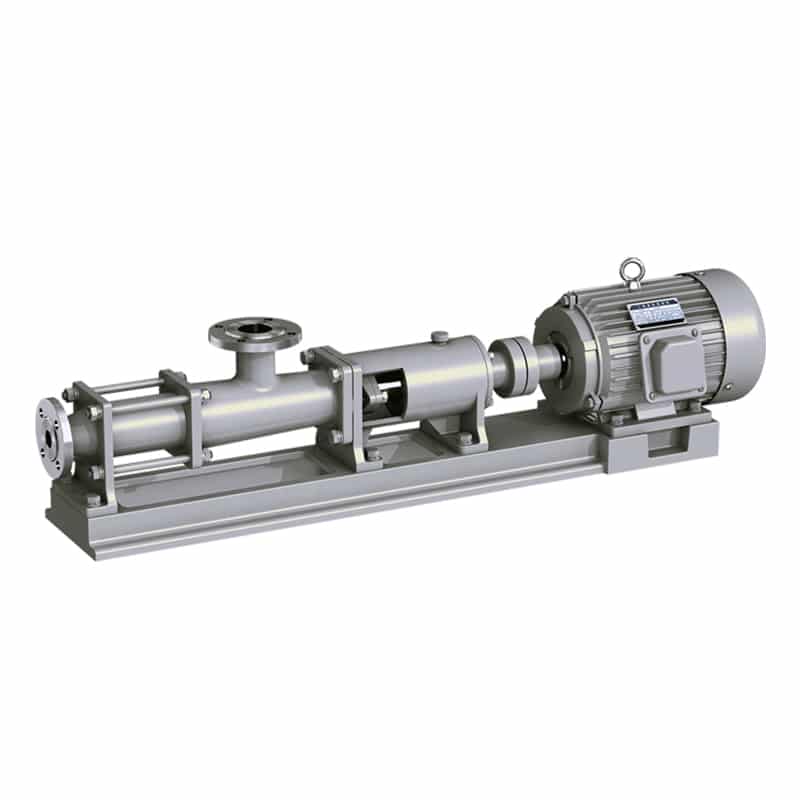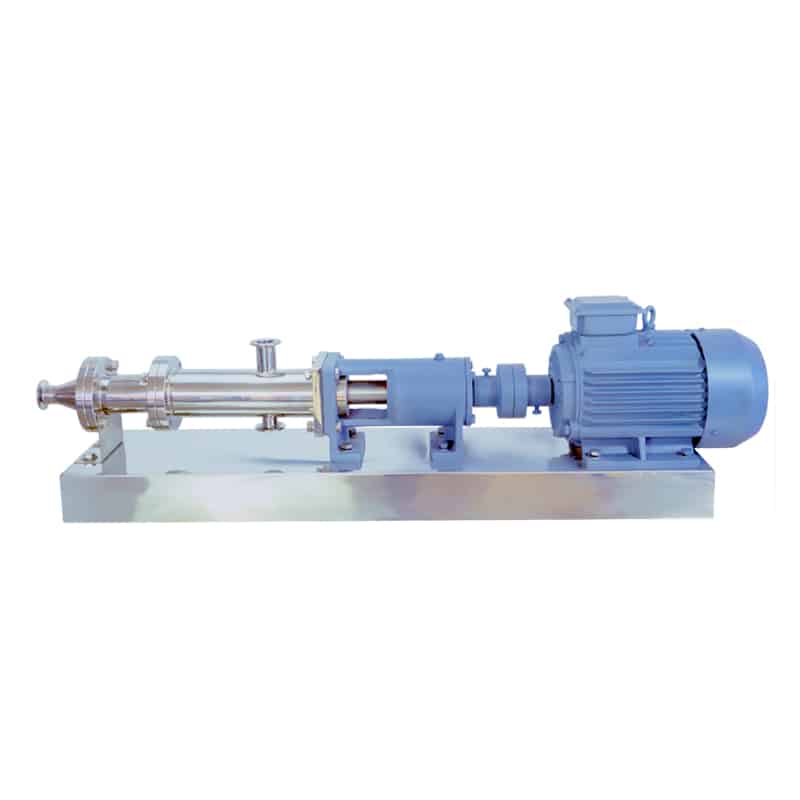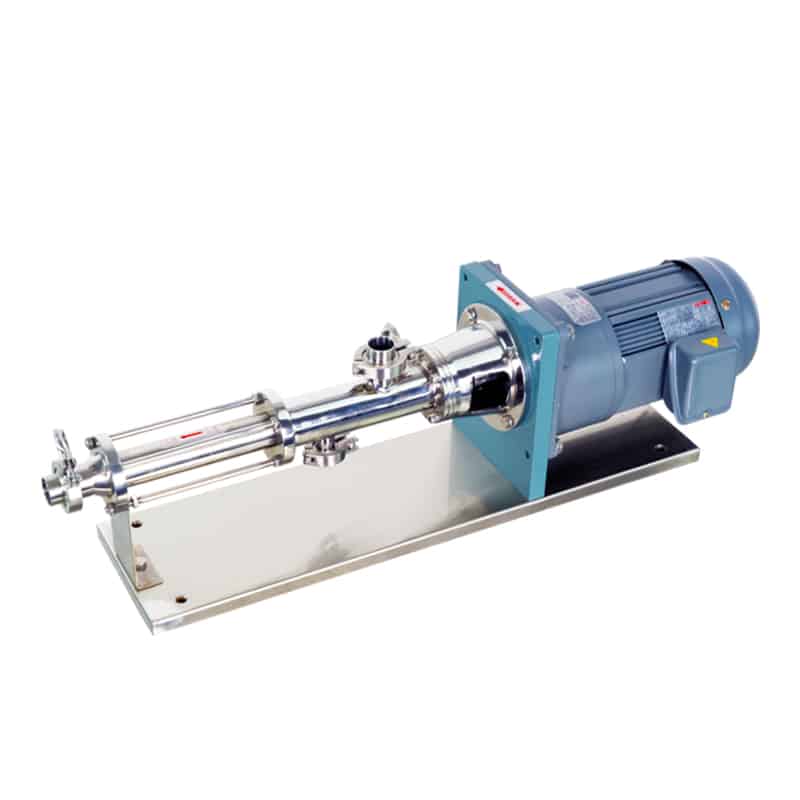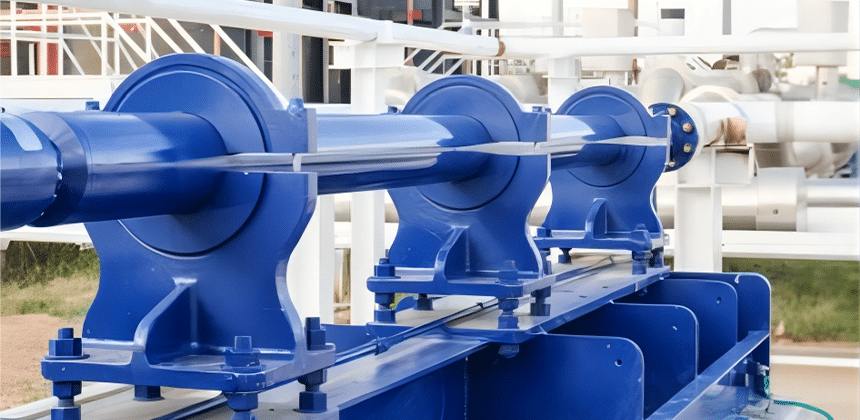Progressive Cavity Pump Troubleshooting
Progressive cavity pumps are an important part of the oil and gas, pulp and paper, chemical, food and beverage, and wastewater treatment industries. They operate on the principle of rotary positive displacement. The performance of a progressive cavity pump depends entirely on these critical components. These pumps are designed to withstand high temperatures and harsh operating conditions. However, considering the type of strain that these pumps are subjected to and the overall wear and tear that they are subjected to, they require regular maintenance, repairs, and possibly replacement parts.
What is a progressive cavity pump?
Progressive cavity pump is a mechanical pump used to transfer liquid or semi-fluid substances. It works by moving a rotating screw (also known as a helix or screw rotor) through the pump’s spiral grooves, thereby pumping liquid from the inlet to the outlet. Progressive cavity pumps are also a type of positive displacement pump. Progressive cavity pump usually consists of one or more screws and one or more stationary housings (helical grooves) in which the liquid is pushed and compressed to create flow.
How do progressive cavity pumps work?
Progressive cavity pumps pump liquid from the inlet to the outlet by moving a helical rotor (also known as a Screw or Threaded Shaft) through a helical groove in the pump body.
- Suction phase: As the progressive cavity pump begins to rotate, the screw rotor moves forward through the spiral groove in the pump body. During this process, the screw rotor creates a low-pressure area that draws liquid from the inlet into the spiral groove. The shape of the spiral groove and the direction of rotation of the spiral rotor determine the direction of liquid flow.
- Discharge phase: As the screw rotor continues to rotate, the liquid is pushed to the outlet of the spiral groove. Due to the rotating action of the screw, the liquid is continuously pushed and compressed, increasing the pressure of the liquid. When the liquid is pushed to the outlet, the outlet valve of the screw pump opens, allowing the liquid to flow out.
- Cyclic repetition: the screw rotor of the progressive cavity pump continuously reciprocates in the spiral groove, continuously sucking in and discharging the liquid. This cyclic process maintains a stable flow rate and pressure, realizing the continuous delivery of liquid.

The operation of progressive cavity pumps is based on the rotary motion of the screw rotor and the geometry of the helical groove, which is capable of efficiently conveying liquids of high viscosity, high temperature, corrosive or containing particulate matter, and is widely used in the fields of industrial production and fluid transportation.
Progressive cavity pump structure
The structure of a progressive cavity pump is mainly composed of the following basic components:
- Screw or helical rotor: The core component of a progressive cavity pump, usually consisting of a twin screw or three screws. The shape and pitch of the screw affects the performance and delivery capacity of the pump.
- Pump body: The shell of the screw and fixed parts, usually made of cast iron, stainless steel or other corrosion-resistant materials.
- Suction and discharge ports: The place where liquid enters the pump body is called the suction port, and the place where it flows out of the pump body is called the discharge port.
- sealing device: Sealing device used to prevent liquid leakage to maintain the efficiency and performance of the pump.
- Bearings: Bearing parts used to support and keep the screw rotor in motion to ensure smooth rotation of the screw rotor.
- Transmission: Components used to transmit power to the screw rotor, usually consisting of a motor and gear drive.
- Pump Couplings: Pump couplings are often provided to connect the progressive cavity pump to a drive such as a motor or engine. The pump coupling helps transfer rotational power and ensures stable pump operation. This helps to minimize vibration and shock, which extends the life of the progressive cavity pump and improves performance.
The structural design of a progressive cavity pump usually takes into account the nature of the fluid, the operating environment and the conveying requirements. There may be some variations for different types of progressive cavity pumps, but in general they follow the basic structure described above.
Types and uses of progressive cavity pumps
- Single screw pump: Also known as eccentric screw pump, it consists of a screw and a lined casing, and is suitable for conveying low-viscosity liquids such as clear water, light oil and fluid powders. It is commonly used in industry for raw material transfer, water treatment, and fluid transfer in the food and pharmaceutical industries. Progressive cavity pumps are also commonly used in filter press pumps.
- Twin-screw pump: Twin-screw pump consists of two screws and a casing, and is suitable for conveying high-viscosity, perishable liquids, such as petroleum, chemicals, lubricants and colloidal solutions. It is widely used in petroleum, chemical, energy and transportation.
- Progressive cavity metering pump: It consists of a rotor made up of screw and elastic cavity liner and a stator made up of fixed casing outer liner. The movement of the rotor within the stator liner causes the liquid to be pushed and thus pumped. These pumps are typically used in applications that require high accuracy and consistent flow, such as chemical, pharmaceutical and food processing.
- Open Hopper Screw Pump: An open hopper screw pump is a screw pump with an open hopper design that allows liquid or granular materials to be easily dropped into the pump. The movement of the screw inside the pump pushes the material to the outlet for efficient conveying. These pumps are commonly used for conveying viscous, particulate liquids or solids, such as sludge and suspended particles.
- Food Grade Progressive Cavity Pump: The Food Grade Progressive Cavity Pump is a screw pump for the food and beverage industry. It utilizes a progressive cavity structure to deliver food grade liquids in a stable and uniform manner, maintaining high sanitation standards. This pump is typically used in food processing, beverage production and other applications where food grade safety needs to be maintained.
The advantages of progressive cavity pumps are their excellent self-priming performance, stable transfer capacity, adaptable fluid characteristics and ability to handle highly viscous and delicate liquids. Different types of progressive cavity pumps are suitable for different application scenarios and can meet the conveying needs of different industries.



Troubleshooting for Progressive Cavity Pumps
| Fault Type | Fault Factor | Repair Method |
| Reduced or interrupted pump flow | Feed inlet clogged | Clean inlet, check seals |
| Pump pressure drops | Feed valve not open | Ensure feed valves are open, replace worn screws |
| Abnormal pump sound | Worn pump parts, air leakage inside the pump Feed instability | Check and replace worn parts |
| High temperature rise | Pump running too long, internal pump friction | Appropriately reduce continuous running time |
| Pump leakage | Seal failure, loose wear parts, internal pump clogging | Replace seals, tighten parts |
Advantages and disadvantages of progressive cavity pumps
Advantages
- High precision flow control
- Suitable for high viscosity media
- low shear
- Good self-priming performance
- Reversible conveying
- Smooth operation
disadvantages
- Complex structure
- Higher price
- Fluid contamination
- Fluid volatilization
How to choose a progressive cavity pump?
Selecting the right progressive cavity pump requires consideration of a number of factors, including fluid characteristics, process requirements, and the environment in which it will be used.
- Fluid characteristics: The first step is to understand the characteristics of the fluid to be conveyed, including viscosity, particle size, and temperature. Progressive cavity pumps are suitable for high viscosity and semi-solid media, and may not be the best choice for liquids that flow easily.
- Flow requirements: According to the flow rate to be conveyed to determine the model and size of the screw pump.
- Head pressure: screw pump pressure capacity varies according to model and size, according to the actual process needs to choose the appropriate pump to meet the pressure requirements.
- Media characteristics: understand the chemical nature of the medium, corrosive, etc., select corrosion-resistant materials to ensure that the service life of the pump.
- Precision requirements: If you need precise flow control, progressive cavity pumps are a good choice, but pay attention to its accuracy at low flow rates.
How to maintain the sex progressive cavity pump?
- Lubrication and cleaning
- Replacement of seals
- Pump bearing maintenance
- Coupling
- Troubleshooting
- Regular inspection and maintenance
summary
The performance of a progressive cavity pump depends entirely on these critical components, which require regular maintenance, repair, and possibly replacement parts. AOBL is a fluid transfer specialist, and in addition to diaphragm pumps, we also offer sanitary diaphragm pumps, electric diaphragm pump and pump spares, so contact our dedicated team of technical specialists to provide you with a solution.

